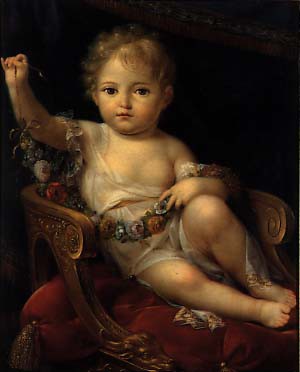The Museo Napoleonico in Rome presents the collections of Count Giuseppe Primoli, the great-grandson of Joseph and of Lucien Bonaparte. Born in 1851 to Princess Charlotte Bonaparte and Count Primoli di Foglia, Giuseppe Primoli belonged to the Roman branch of the imperial family. He spent most of his youth in Paris, at Napoleon III's court and moved to Rome after the fall of the Empire. Totally devoted to his family on his mother's side, he started a collection of works of art and various objects linked with the Bonapartes. The collection – comprising family souvenirs, objects donated by Princess Mathilda and Empress Eugénie, items bought from antique dealers or purchased in auction sales – grew consistently until its owner died in 1927. Count Primoli donated it to the city of Rome where many Bonapartes had sought refuge.
The museum is arranged in exactly the same way as it was when first planned by its founder. Primoli's aim was to present the imperial family from a private point of view. The history of the First and Second Empires is therefore evoked through the private lives of its main protagonists. The museum goes beyond the official iconography linked to the major historical events of the time and explores the Bonapartes' day-to-day lives through a great variety of objects.
On the ground floor of Palazzo Primoli, the collection is displayed in ten rooms which all illustrate the museographic taste of the 19th century. The rooms devoted to the Napoleonic legend and those dealing with the French occupation of Rome during the pontificates of Pius VI and Pius VII, are the only ones that have been altered. The tour starts off with an evocation of Napoleon through a series of paintings, sculptures and small personal belongings. Of particular interest is the snuffbox belonging to Louis XVIII which Napoleon found on his desk on returning from Elba and which he took with him to St Helena. The following room features paintings of three of Napoleon's brothers: Lucien, Louis (a full-length portrait of him standing beside his son, Napoleon Louis, by Wicar), and Jerome. The room devoted to the King of Rome puts on show objects which for the most part come from the collection of Count Prokesch-Osten, a friend of the Duke of Reichstadt's. A series of drawings, amongst which a sketch by Prud'hon, celebrates allegorically the birth of the young king. The rooms devoted to Pauline, Joseph, Caroline and Joachim Murat follow. Charlotte and Zenaïde, Josef's daughters, are represented in a work painted by David during his exile in Brussels. The sisters were in fact among the great master's students. Individual exhibition rooms are given to Giuseppe Primoli's grandparents, Zenaïde and Charles Lucien, to his mother, Princess Charlotte, to King Jerome and to Jerome's daughter, Princess Mathilda.
The Second Empire is given pride of place in the museum. Amongst the furniture from Princess Mathilda's residence in Paris, a collection of prints, miniatures and commemorative medals recalls the economic prosperity of the period. The visit ends with two full-length portraits of Napoleon III and Empress Eugénie by Winterhalter and a statue of the imperial Prince by Carpeaux.
Museo Napoleonico – Rome


